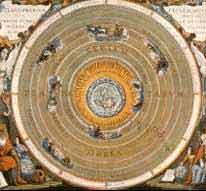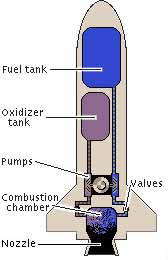|
> History > Recent & Future Developments
|
People dreamed of space flight for millennia before it became reality. Evidence of the dream exists in myth and fiction as far back as Babylonian texts of 4000 bc. The ancient Greek myths of Daedalus and Icarus also reflect the universal desire to fly. As early as the 2nd century ad, the Greek satirist Lucian wrote about an imaginary voyage to the Moon. In the early 17th century the German astronomer Johannes Kepler wrote Somnium (Sleep), which might be called a scientific satire of a journey to the Moon. The French writer and philosopher Voltaire, in Micromégas (1752), told of the travels of certain inhabitants of Sirius and Saturn; and in 1865 the French author Jules Verne depicted space travel in his popular novel From the Earth to the Moon. The dream of flight into space continued unabated into the 20th century, notably in the works of the English writer H. G. Wells, who published The War of the Worlds in 1898 and The First Men in the Moon in 1901. More recently, fantasies of space flight have been nourished by science fiction. Early DevelopmentsDuring the centuries when space travel was only a fantasy, researchers in the sciences of astronomy, chemistry, mathematics, meteorology, and physics developed an understanding of the solar system, the stellar universe, the atmosphere of the Earth, and the probable environment in space. In the 7th and 6th centuries bc, the Greek philosophers Thales and Pythagoras noted that the Earth is a sphere; in the 3rd century bc the astronomer Aristarchus of Samos asserted that the Earth moved around the Sun. Hipparchus, another Greek, prepared information about stars and the motions of the Moon in the 2nd century bc. In the 2nd century ad Ptolemy of Alexandria placed the Earth at the centre of the solar system in his cosmic scheme, now called the Ptolemaic system. [Top] Scientific DiscoveriesNot until some 1,400 years later did the Polish astronomer Nicolaus Copernicus systematically explain that the planets, including the Earth, revolve about the Sun. Later in the 16th century the observations of the Danish astronomer Tycho Brahe enabled Kepler to formulate the laws of planetary motion. Galileo, Edmond Halley, Sir William Herschel, and Sir James Jeans were other astronomers who made contributions pertinent to astronautics.
Physicists and mathematicians also helped to lay the foundations of
astronautics. In 1654 the German physicist Otto von Guericke proved that a
vacuum could be maintained, refuting the old theory that nature “abhors” a
vacuum. In the late 17th century Sir Isaac Newton formulated the laws of
universal gravitation and motion. Newton’s laws of motion established the
basic principles governing the propulsion and orbital motion of modern
spacecraft. [Top] Rocket PropulsionThe techniques of rocket propulsion also originated long ago.
Ancient rockets used gunpowder as fuel, very much as in fireworks today.
In ad 1232 in China, the city of Kaifeng was reportedly defended against
the Mongols by the use of rockets. From the Renaissance onwards,
references were made to the proposed or actual military use of rockets in
European warfare. As early as 1804 the British army established a rocket
corps equipped with rockets that had a range of about 1,830 m (6,000 ft).
|

